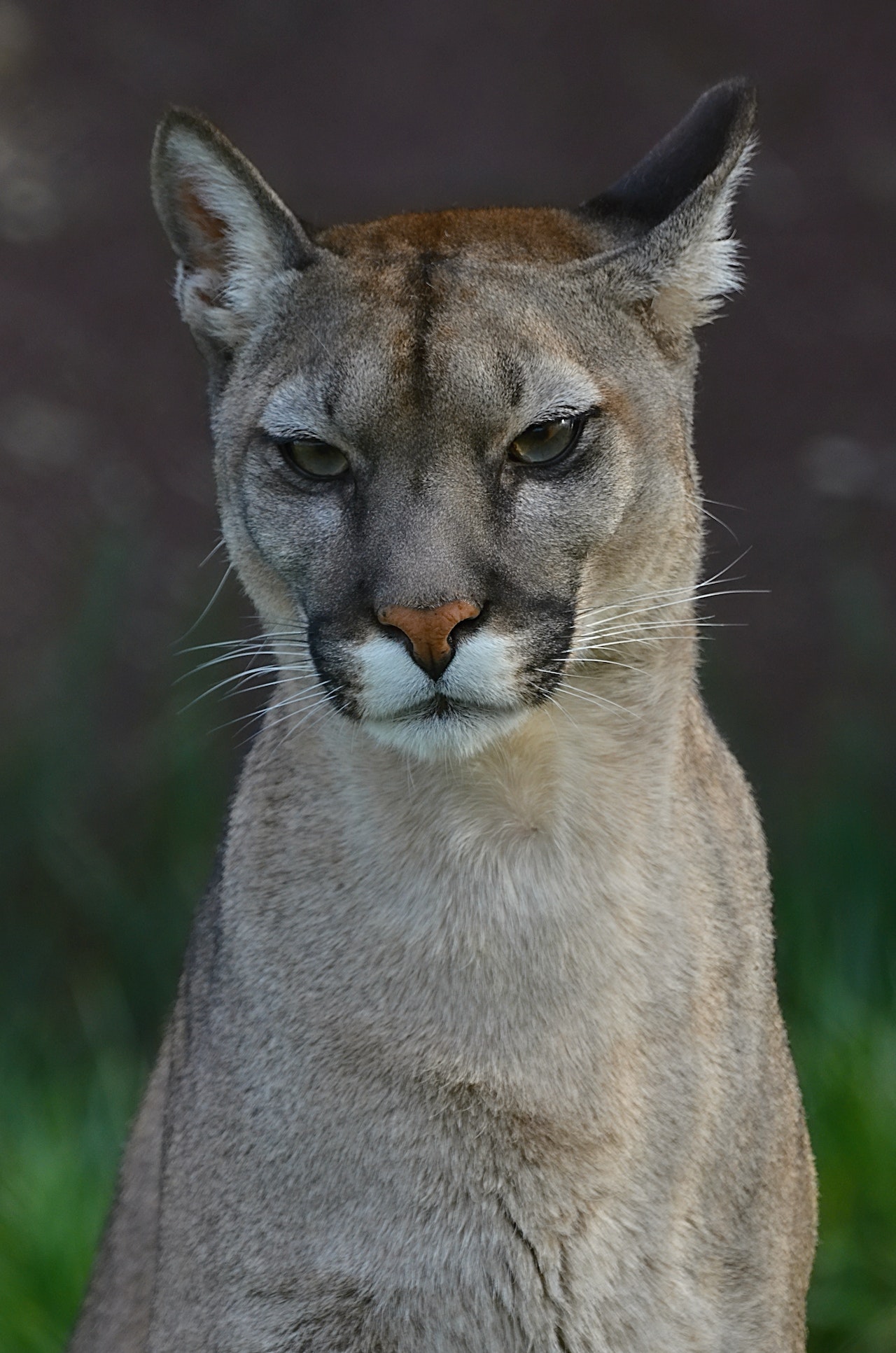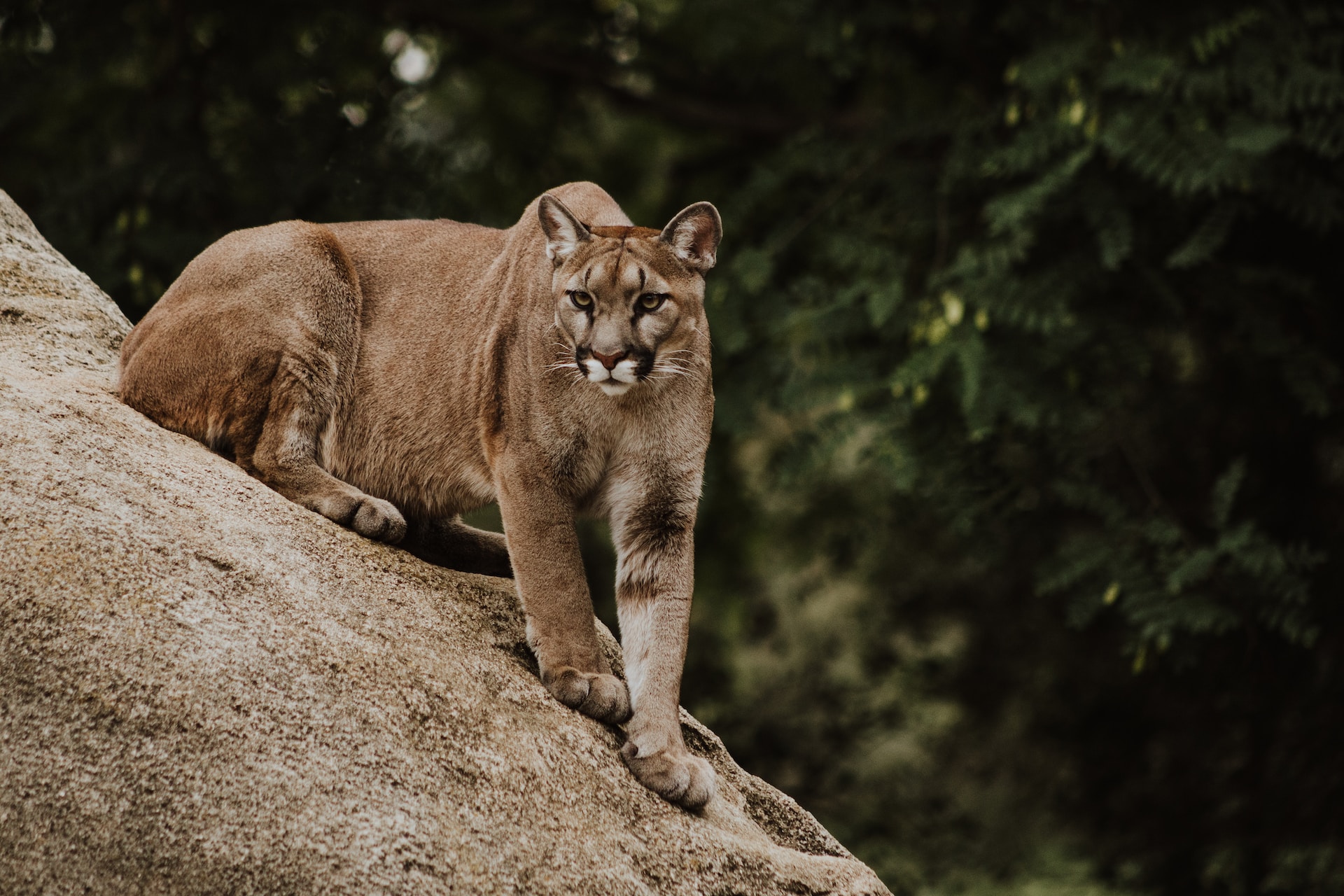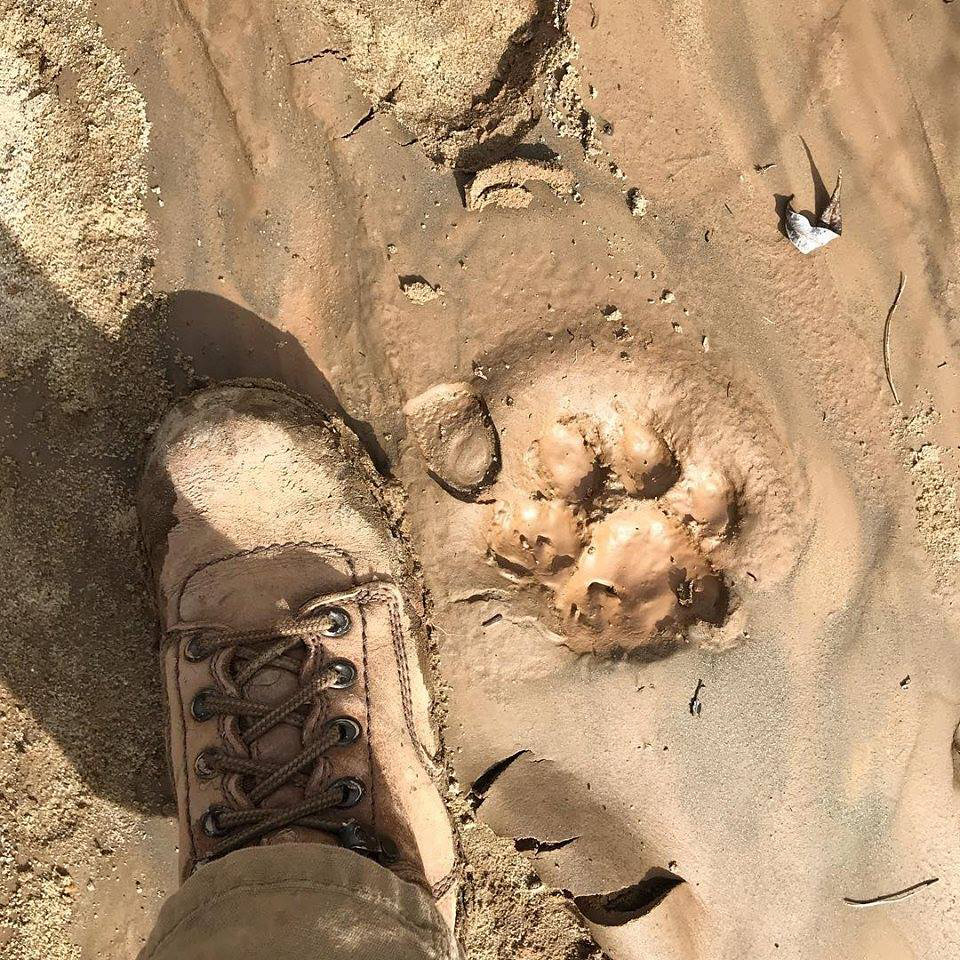Whether you call them mountain lions, pumas, cougars, or catamounts, the Puma concolor is the largest wild cat we have here in the Eastern Sierra. And while you’re not very likely to see one of these amazing animals during your trip to Mammoth Lakes, the truth is, we share our backyard with these guys! So, you may hear them, see their tracks, or even walk through their territory without knowing it.
In this article, you can learn more about our most elusive wild neighbor and what to do if you ever see one in person.
How big are mountain lions, really?
Mountain lions exist in many parts of the world, so you may wonder how big they are up here in Mono County. According to the California Department of Fish and Wildlife, our Eastern Sierra pumas top out at around 128 lbs for the males, and 88 lbs for the females. And they can be anywhere between 6 to 8 ft in length, from nose to tail.

What is their natural prey?
In this part of the Sierras, cougars have an array of prey options, including deer, bighorn sheep, coyotes, raccoons, rabbits, and even the wild horses that live north of Bishop. Of course, mountain lions don’t distinguish between wild prey and domesticated animals, so they have also been known to hunt livestock and pets.
How large is the puma population in the Eastern Sierra?
The most recent data we have about our puma population is from 2021, in which 55 unique lions were documented as part of a monitoring effort. Because these animals are so stealthy, it’s assumed that the actual number is probably higher.
Now, we should note that the range for these animals is very large—their habitat spans along the entire Eastern Sierra! So, while 55 may seem like a large number, we’re talking about a distribution that spans over hundreds of miles, from the edge of the Mojave Desert all the way up to the Oregon border.
Do pumas ever come into contact with humans in Mammoth Lakes?
It’s extremely rare for humans in our area to come into contact with mountain lions. In fact, if you were to ask a handful of locals, chances are, none of them would have seen a puma with their own eyes. But, rare doesn’t mean that encounters never happen.
Back in 2017, a hunter near Mono Lake was attacked by a puma that seemed to be responding to his distressed rabbit call. Two years earlier, there were two reported attacks on pets in Crowley Lake.
Recently, three mountain lions were spotted and photographed in town. But there have been no reports of incidents involving the trio.

Are mountain lions dangerous?
Mountain lions are highly secretive and not interested in humans as prey. So, you shouldn’t be afraid of them during your next trip to Mammoth.
That being said, mountain lions are powerful predators. And, they do pose a threat to dogs, cats, and other pets. It’s important to add that any wild animal, whether it’s a deer, raccoon or squirrel, that is sick, cornered or desperate has the potential to be dangerous.
How to make yourself uninteresting to mountain lions
As you can see, encounters and sightings of pumas in our area are very rare. But still, there are a few easy things you can do to make sure that these big cats keep their distance, such as:
-
Hiking in groups. Hiking with friends is always recommended, not only because it will ward off mountain lions, but because it will also mean that you can take care of one another in the case of an injury.
-
Having pets on leash. As we mentioned, pets are at higher risk for a puma attack than humans, which is yet another reason to always have your dog (or cat!) on a leash or within eyesight.
-
Plan your activities during the day. Mountain lions hunt mostly at night, dawn, and dusk when their primary prey is also active. So, planning your outdoor activities during the day is recommended (plus, you’ll have a better view of our beautiful mountains!)
What should you look out for when you’re on the trail?
Seeing signs of a mountain lion can be a thrilling experience! Here are some of the things you can look out for on the trail to know if a puma has been in the area:
-
Paw prints. Puma prints are often mistaken for dog or coyote prints, but there are a few key differences. Puma prints are larger, rounder and wider, and thanks to their retractable claws, their prints don’t usually appear with claw markings. You can also more clearly see three bumps or lobes at the rear of the foot.

-
Scat. If you find yourself walking along the trail and see a pile of poo right in the middle of it, your first thought might be “Wow, what kind of person doesn’t pick up after their dog?” But you might actually be looking at puma poo! Take a closer look (not too close!) and you might even see fragments of bone, fur, and other nondigestible materials.
-
A kill cache. When a mountain lion makes a kill, they will drag the carcass to a safe area to enjoy their meal. Usually, they don’t make a big effort of hiding or burying their food, so it’s not uncommon to come across one of these hiding places during a hike.
Remember: even if you see signs of a mountain lion on the trail, don’t panic. Make plenty of noise and move out of the area confidently. Even if a puma is watching from a distance, they’re not likely to approach.
What do mountain lions sound like?
Despite the name, you’ll never hear a lion-like roar coming from a puma. So, what do these majestic animals sound like? Here are a few variations:
-
Purring. Just like our domestic kitties, pumas can purr.
-
Chirping and whistling. A mountain lion’s chirp or whistle sounds almost exactly like a birdsong or baby bird call. These sounds may be a way for mountain lions to communicate over large distances, especially between a mom and her cubs.
-
Yowling and screaming. If you’ve ever had the “privilege” of hearing a puma scream, you’re probably not going to forget it! In fact, there are quite a few viral videos of this phenomena, as a screaming puma sounds eerily like a human. This kind of sound is heard mostly at night and probably has to do with territory disputes and mate attraction.
How should you react if you see a puma?
If you ever have the rare experience of seeing a puma, there are a few things you should do:
-
Don’t approach. If you see a mountain lion from a distance, do not move closer.
-
Stand your ground and make yourself look huge. Face the mountain lion and raise your hands, backpack, hiking poles, whatever you have over your head to appear bigger.
-
Make a ruckus. Shout, stomp your feet, bang sticks against tree trunks, generally make as much noise as you can.
-
Use your bear spray if you have to.
-
Fight back. We’ve said it many times but attacks on humans are incredibly rare. If it does happen, your best defense is to fight back.
-
Move on, calmly. Once the interaction is over, remain calm and continue on your way at a normal pace. Once you get back to town, make sure to report that you’ve seen a mountain lion to the rangers at the Welcome Center!
Mountain lions are some of our most amazing wild residents
Pumas are just one of the many wild animals that play an important role in our Eastern Sierra ecosystem. By learning more about them, you can help us keep them (and yourself!) safe.
Want to explore the beautiful wilderness that Eastern Sierra bears, deer, raccoons and more call home? Book your condo today to enjoy these amazing animals (from a distance!)
